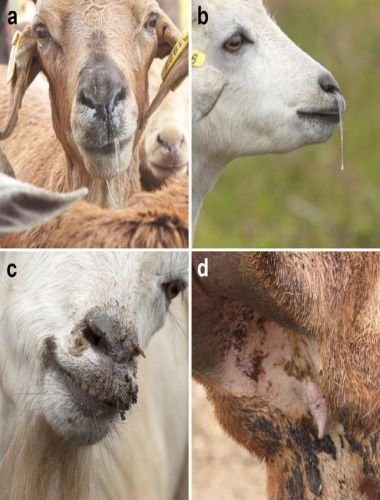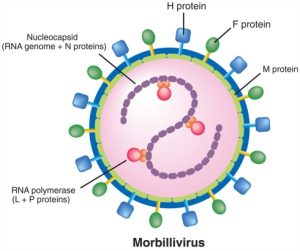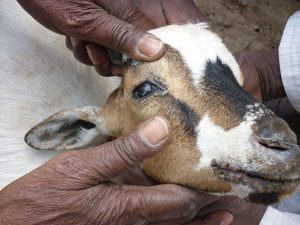PPR, Pestis des Petitis ruminants
PPR is stand for Pestis des pestitis ruminants. is a contagious disease affecting goats and sheep in Africa (from the Tropic of Cancer to the Equator), the Middle East and the Indian subcontinent. But since June 2008, the disease invaded Morocco, which indicates a crossing of the natural barrier of the Sahara. It is caused by a species of the Morbillivirus genus of viruses. The Disease is highly contagious, and has roughly an 80 percent mortality rate in acute cases.

Others names of PPR:
It is also called as Ovine rinderpest , Goat plague, Pseudo Rinderpest, pest of small Ruminants and also called as KATA. Acute and Subacute viral disease of small ruminants that is characterized by fever, erosive stomatitis, conjunctivitis, gastroentritis and pneumonia.
Etiology of PPR:
The causative agent of PPR is belongs to family Paramyxovaridae genus Morbilli virus. This virus is antigenically related with the Rinderpest virus , canine distemper virus and human measles virus.

Epidemiology of PPR:
- PPR comes under the heading of list A diseases by OIE.
- Goats are more susceptible than sheep , mostly outbreaks are seen in Africa and Asia.
- Morbidity rate is 90%
- Mortality rate is 50-80%
- Directly (through infected animal ) and indirectly ( through Saliva, bedding material, feces ) disease is transmitted.

Pathogenesis of PPR:
After inhalation virus enters into the body cavity and reach the pharyngeal and submandibular lymph nodes where it starts multiply, after multiplication the virus enters into the blood and cause viremia within the three days of onset of infection. From here virus moves to lymphoid tissues that may lead to leuckopenia and immunosuppression and virus moves mucosa of GIT and respiratory tract. It cause gastroentritis and pneumonia.After it body temperature return to normal.
Clinical Findings of PPR:
- The incubation period of PPR is from 2-9 days.
- PPR Effected animal shows high rise of body temperature ranges from 105-106F.
- animal become dull, depressed ,anorectic and mucosal erosions in the passage of mouth and nasal cavity become evident within 5 days.This may lead to profuse salivation and necrotic stomatitis with halitosis.
- Later on nasal discharge becomes mucopurulent , severe respiratory distress is present that may lead to trachitis and pneumonia.
- signs of conjunctivitis.
- after 3 days of infection profuse watery diarrhea noted that may lead to dehydration , hypothermia and animal lead to death.
- Pregnant animals died because of high body temperature.
Post Mortem lesions of PPR :
- Necrosis , erosion’s , congestion , hemorrhages are present in the mouth and respiratory tract.
- zebra stripping is present in Colon is important sign of PPR.
- haemorrhagic gall bladder.
- Swollen and enlarged lymph nodes.
- White foci are present in pair patches.
Diagnosis of PPR :
- on this basis of history,clinical signs,Post-mortem lesions and Haematology.
Treatment of PPR :
- No specific Treatment. Symptomatic and supportive drugs are given, Must keeps the antibiotic ( Tylosine) because mycoplasmosis and PPR occur in same season. due to rise in temperature NSAID is also given. Avoid use of steroids.
- If animal dull and depressed Dextrose .
- Immune boosters.
- dont waste money on anti diarrhea drugs.

Informative (y)